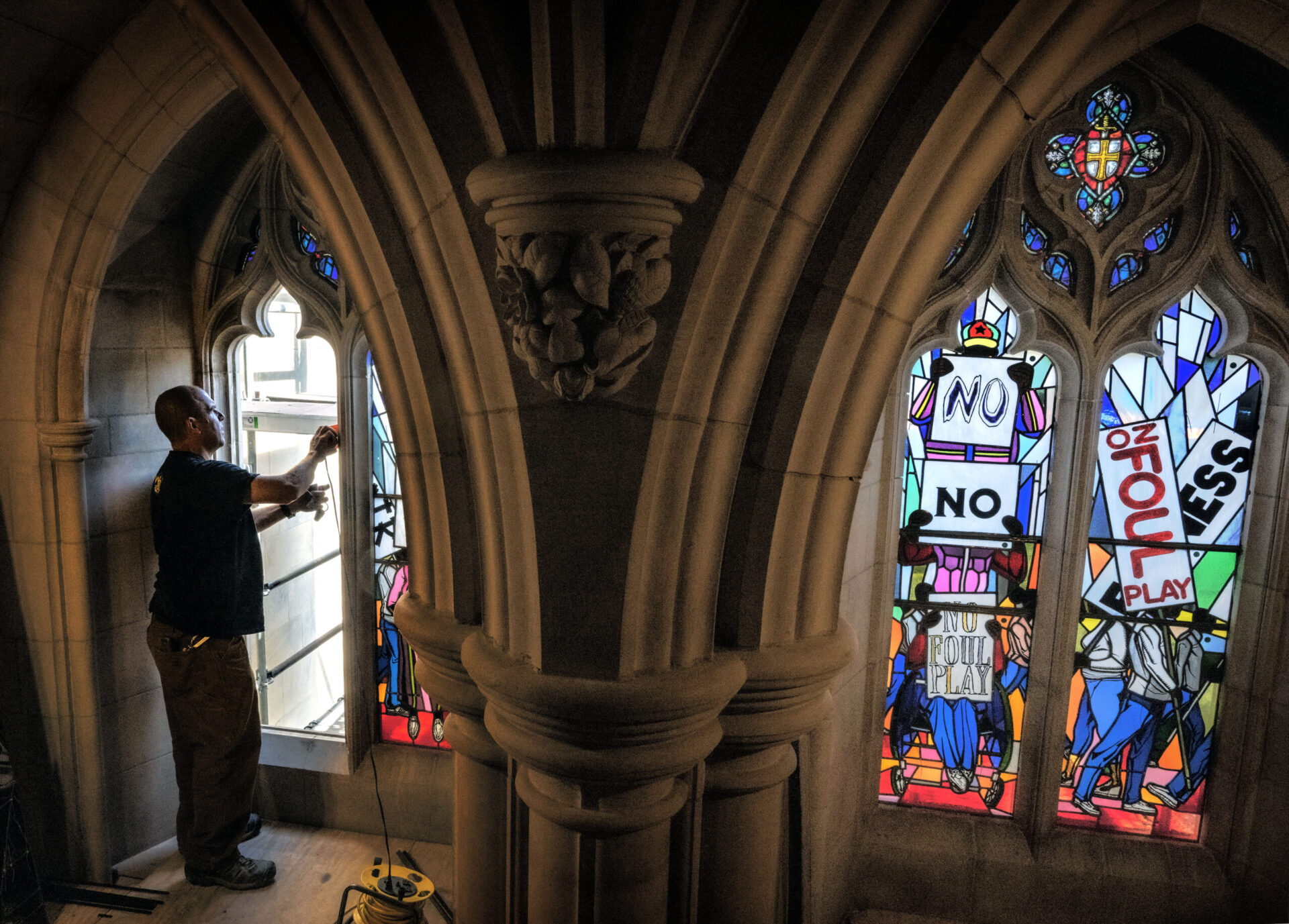
September 27, 2023
Washington National Cathedral Replaces Confederate Stained-Glass Windows With ‘Racial-Justice Themed’ Designs
The Washington National Cathedral has a new look.
On Sept. 23, the cathedral revealed new “racial-justice themed” stained-glass windows depicting protesters, the National Review reports. In September 2021, the Episcopal church announced it was working with Black artist Kerry James Marshall on the project that would replace the windows depicting images of Confederate Generals Robert E. Lee and Thomas “Stonewall” Jackson.
The new windows, titled “Now and Forever,” feature images of protesters holding signs saying “FAIRNESS,” “NO FOUL PLAY,” and “NO.” One protester is in a wheelchair, and full faces aren’t shown.
The church’s leadership voted to have the Confederate flags removed from the windows in 2016; after 2017’s deadly Charlottesville, Virginia, rally, the windows were removed entirely.
During the unveiling ceremony, the Very Rev. Randolph Marshall Hollerith, dean of Washington National Cathedral, said the previous images “told a false narrative.”
“Simply put, these windows were offensive, and they were a barrier to the ministry of this cathedral, and they were antithetical to our call to be a house of prayer for all people,” Hollerith said.
“They were intended to elevate the Confederacy, and they completely ignored the millions of Black Americans who have fought so hard and struggled so long to claim their birthright as equal citizens.”
Hollerith says Marshall’s work “lifts up the values of justice and fairness and the ongoing struggle for equality among all God’s great children.” According to NPR, the profound artist has had work housed in the Metropolitan Museum of Art, the National Gallery, and the Museum of Fine Arts Boston. His career has been devoted to creating Black lives and Black culture on canvas.
Along with the windows, visitors can view an original poem titled “American Song” by Elizabeth Alexander, inscribed in stone tablets close by. “A single voice raised, then another. We must tell the truth about our history,” the poem starts. “How did we get here and where do we go? Walk toward freedom. Work toward freedom. Believe in beloved community.”